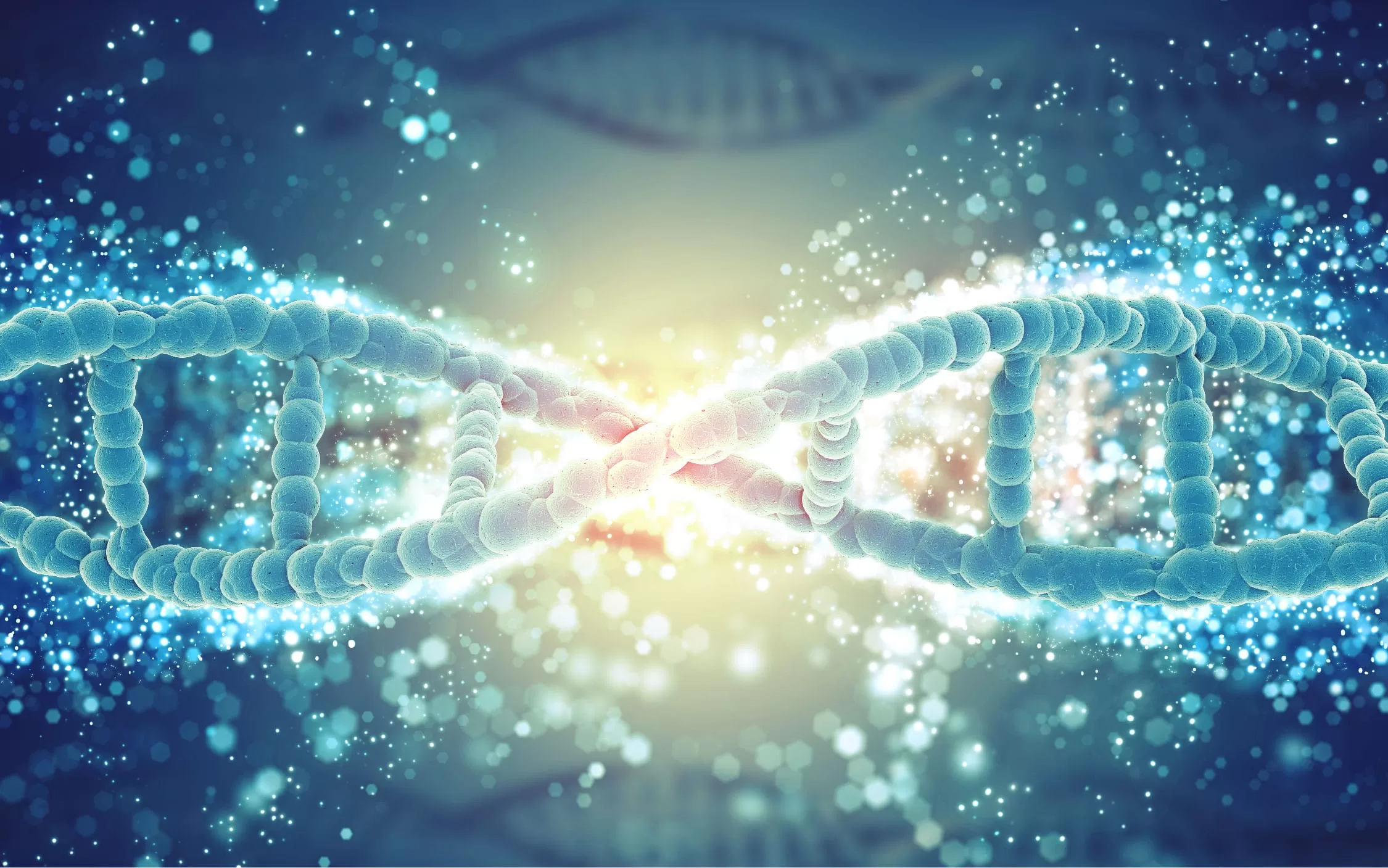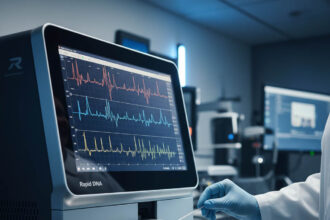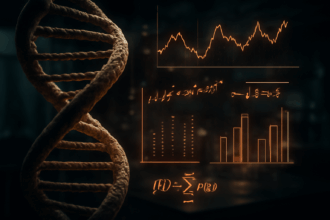Introduction
DNA analysis in forensic science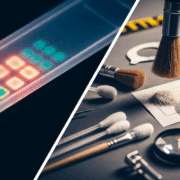 Discover the fascinating field of Forensic Science, the application of scientific principles to legal matters. This post delves into its many disciplines, from DNA analysis to crime scene investigation, its importance in the justice system, Read Full Definition, also known as forensic DNA profiling
Discover the fascinating field of Forensic Science, the application of scientific principles to legal matters. This post delves into its many disciplines, from DNA analysis to crime scene investigation, its importance in the justice system, Read Full Definition, also known as forensic DNA profiling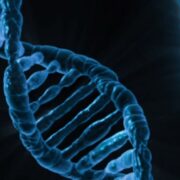
Forensic scientists can determine if there is a match by comparing the DNA found at a crime scene (such as blood or hair samples) to a suspect’s DNA samples. The suspect can be eliminated from the investigation if there is no match. However, if there is a match, the police will likely want to conduct further investigation.
Moreover, DNA fingerprinting applications extend beyond criminal investigations. It can be used in other areas, such as in paternity testing, immigration cases, and even in identifying ancient human remains. This technology has allowed for a more precise"Precise" refers to the degree of closeness or consistency between multiple measurements or values taken under the same conditions. It indicates how well these measurements agree with each other, regardless of whether they are accurate Read Full Definition and effective way of identifying individuals, eliminating errors that may occur with traditional identification methods.
Technology has changed the criminal justice system a lot in recent decades. It’s now much more likely to identify criminals with certainty, making it easier to catch the right person and less likely to accuse innocent people falsely. This article delves into the history, process, and uses of DNA profiling in the criminal justice system, exploring various DNA crime solving techniques and forensic DNA analysis methods.
What Is DNA?
Before discussing the intricacies of DNA profiling, it is crucial to have a thorough understanding of DNA itself. DNA, short for deoxyribonucleic acid DNA, or Deoxyribonucleic Acid, is the genetic material found in cells, composed of a double helix structure. It serves as the genetic blueprint for all living organisms. Read Full Definition, is the fundamental building block of the human body’s cells. It is unique to each individual, serving as a genetic code that determines various characteristics and traits. The DNA definition in forensics is critical to understanding its role in criminal investigations.
DNA, or Deoxyribonucleic Acid, is the genetic material found in cells, composed of a double helix structure. It serves as the genetic blueprint for all living organisms. Read Full Definition, is the fundamental building block of the human body’s cells. It is unique to each individual, serving as a genetic code that determines various characteristics and traits. The DNA definition in forensics is critical to understanding its role in criminal investigations.
The structure of DNA is composed of four different chemical bases: adenine (A), guanine (G), cytosine (C), and thymine (T). These bases are arranged in a specific sequence that makes up an organism’s genome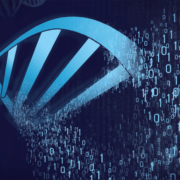
Understanding DNA is essential in various fields, including medicine, forensics, and genetics. In medicine, studying DNA has helped identify genetic mutations that may be responsible for certain diseases. This has led to the development of treatments and therapies for genetic conditions and diseases, which can improve people’s lives. DNA profiling is a powerful tool for identifying individuals and solving crimes in forensics. Studying DNA in genetics helps researchers understand species’ origins, evolution, and mechanisms behind genetic diseases. The study of genetic variation plays a crucial role in these fields, providing insights into human diversity and susceptibility to various conditions.
DNA Profiling Procedure
Forensic DNA profiling is a crucial technique in many aspects of life. The first step required in DNA profiling is to obtain relevant DNA samples. This can be done in several ways. For example, only a few cells from a person’s skin, a buccal swab, or the root of a hair are needed to build a unique DNA profile. Similarly, other bodily fluids like blood or semen can be used to build this profile. It is often discovered at crime scenes and can be used to identify potential suspects. If the police have a list of persons of interest, they may ask them to provide their DNA samples voluntarily. However, if there is substantial evidence Evidence is any form of proof, such as objects, materials, or scientific findings, presented to establish or disprove a fact in a legal proceeding. It is used to reconstruct events and link or exclude individuals Read Full Definition against a person of interest, the courts can order them to provide a DNA sample. This can help to build a stronger case against the suspect.
Evidence is any form of proof, such as objects, materials, or scientific findings, presented to establish or disprove a fact in a legal proceeding. It is used to reconstruct events and link or exclude individuals Read Full Definition against a person of interest, the courts can order them to provide a DNA sample. This can help to build a stronger case against the suspect.
After obtaining a sample, they perform a series of steps to extract and copy the DNA. DNA extraction is a critical process in forensic genetics, ensuring that high-quality genetic material is available for analysis. Next, the quantity and quality of the DNA recovered are checked using real-time PCR, and copies of these DNA are made using Polymerase Chain ReactionA method of making multiple copies of a DNA sequence involving repeated reactions with a polymerase. Read Full Definition (PCR) techniques. PCR in forensics is essential for DNA amplification, allowing scientists to work with even trace DNA samples. They then separate the copied markers utilizing a process known as capillary electrophoresis to produce an electropherogram. This graph displays the DNA fragments and highlights the number of repeats for each marker and where they appear. Electrophoresis in crime labs is a crucial step in separating and analyzing DNA fragments.
The DNA profile in forensics typically consists of a list of numbers that detail the number of repeat units in each alleleAlleles are different forms of a gene resulting from mutations or variations in the DNA sequence or gene expression. They can be dominant (expressed with one copy) or recessive (expressed only with two copies). Read Full Definition of 24 marker points throughout the person’s genome. These DNA regions for profiling, known as short tandem repeats (STRs), are highly variable between individuals, making them ideal for identification purposes. This information is crucial for identifying individuals and linking them to specific crimes.
However, it is worth noting that DNA evidence can be complex and challenging to analyze. Forensic scientists must take great care to ensure their results are accurate and reliable, as mistakes can have serious consequences. They may also use specialized software to analyze complex data Information in analog or digital form that can be transmitted or processed. Read Full Definition sets. DNA analysis aims to help law enforcement professionals solve crimes and bring perpetrators to justice. The reliability of DNA fingerprinting has made it an indispensable tool in modern criminal investigations.
Information in analog or digital form that can be transmitted or processed. Read Full Definition sets. DNA analysis aims to help law enforcement professionals solve crimes and bring perpetrators to justice. The reliability of DNA fingerprinting has made it an indispensable tool in modern criminal investigations.
The History of DNA Profiling
The discovery of DNA profiling was a monumental moment in forensic science. In 1984, Sir Alec Jeffreys made the groundbreaking discovery that every person’s DNA exhibits distinct patterns that could be used to differentiate one person’s DNA from another’s. This discovery immediately sparked interest in the scientific community, opening the door to a new way of identifying suspects in criminal investigations. Jeffreys’ work was tested when he compared DNA from a crime scene to that of a suspect, and the results did not match. Jeffreys then analyzed over 4,000 voluntarily provided DNA samples but could not find a match. This was a frustrating setback, but Jeffreys persevered. It was later discovered that a man had confessed to having provided a false sample on behalf of the actual perpetrator. The real culprit, Colin Pitchfork, was identified and sentenced to life in prison. DNA profiling has since become a standard practice in criminal investigations, revolutionizing the field of forensic science and leading to the successful identification of countless criminals.
The DNA profiling process has undergone significant advancements in recent years. While past methods relied on longer repeat segments to identify DNA, modern profiling techniques use Short Tandem Repeats (STRs) that are much shorter and more accurate. Furthermore, capillary electrophoresis has dramatically improved the process of separating DNA fragments. This method involves using a capillary tube filled with a gel matrix that separates DNA fragments based on their size and charge, allowing for a more precise analysis. The use of DNA polymerase in the PCR process has greatly enhanced the efficiency of DNA amplification, making it possible to work with even smaller amounts of genetic material.
The DNA Profiling Process Today
Today, DNA profiling is more sensitive and efficient than ever. Advances in PCR technology have made it possible to amplify DNA samples, making them easier to detect. Forensic scientists can now work with smaller amounts of biological evidenceBiological evidence - physical evidence such as bodily fluids that originated from a human, plant or animal. Read Full Definition, and even a few skin cells left behind by a criminal can be used to retrieve DNA. The development of multiplex PCR has further improved the efficiency of DNA analysis, allowing for the simultaneous amplification of multiple genetic markers.
DNA profiling has come a long way since its inception. The advent of PCR technology has revolutionized the field, allowing for the amplification of DNA samples and thus making them more easily detectable. This means that forensic scientists can work with smaller amounts of biological evidence, even tiny numbers of skin cells that may have been left behind. These technological advancements have made DNA profiling more sensitive and efficient. As a result, it has also become an invaluable tool in the fight against crime, as it can provide crucial evidence that can help to identify suspects and bring them to justice.
Database technology, particularly the Combined DNA Index System (CODIS), has revolutionized criminal investigations. CODIS DNA crime solving has greatly facilitated the search for matches for DNA collected at crime scenes, allowing for the easy comparison of DNA profiles and the generation of investigative leads. DNA databanks have become an essential resource for law enforcement agencies, providing a vast repository of genetic information for comparison and analysis.
Genealogy databases have also been employed to identify suspects, as seen in the 2019 Wisconsin cold case murder solved using such a database. Given its significant contributions to the efficiency and accuracyIn scientific and measurement contexts, "accuracy" refers to the degree of proximity or closeness between a measured value and the true or actual value of the measured quantity. Accuracy indicates how well a measurement reflects Read Full Definition of crime-solving techniques, the role of database technology in the criminal justice system cannot be overstated.
Another critical development in DNA profiling is using software to analyze complex DNA profiles more efficiently and accurately. This software can compare DNA samples from different sources, identify potential matches, and determine the statistical probability of a match, making it an invaluable tool for forensic investigations. DNA sequencing technologies have also advanced significantly, allowing for more detailed analysis of genetic material.
Overall, the advances in DNA profiling have significantly increased the accuracy and reliability of DNA analysis, making it an indispensable tool for criminal investigations and other applications in medicine and biology. The field of forensic genetics continues to evolve, with new techniques and technologies constantly being developed to improve the efficiency and accuracy of DNA analysis.
DNA Profiling Uses in the Criminal Justice System
DNA profiling has transformed the criminal justice system by enhancing accuracy, identifying potential suspects, and linking them to a crime. Moreover, unlike eyewitness accounts, DNA is scientifically accurate and more difficult to dispute.
Forensic DNA profiling has transformed the criminal justice system in many ways. By analyzing DNA evidence, investigators can identify potential suspects more accurately and link them to a crime. Moreover, this technique has brought a new level of scientific rigor to forensic investigations, which was previously lacking. Unlike eyewitness accounts, DNA evidence is scientifically accurate and more difficult to dispute. This has made it easier to obtain convictions and bring criminals to justice. Furthermore, DNA profiling has helped to exonerate innocent individuals who were wrongly accused and convicted of crimes they did not commit. In this way, DNA profiling has not only improved the accuracy of criminal investigations but also helped to prevent wrongful convictions.
Beyond its use in the criminal justice system, DNA fingerprinting applications have found uses in other areas, such as paternity testing, immigration cases, and even in identifying ancient human remains. In addition, this technology has allowed for a more precise and effective way of identifying individuals, eliminating errors that may occur with traditional identification methods.
In conclusion, DNA analysis in forensic science has revolutionized the criminal justice system by enhancing its accuracy, identifying potential suspects, and linking them to a crime. However, it’s important to remember that it’s just one piece of the criminal justice puzzle and should not be relied on to exclude other investigative and analytical tools. Nonetheless, given the advances in technology and its growing acceptance, DNA profiling is here to stay. Therefore, it will continue to play an essential role in the criminal justice system.
Limitations of DNA Profiling
DNA profiling has many practical applications that have been used in forensic science, medicine, and even genealogy. Despite its many advantages, however, there are some drawbacks to consider.
One of the main concerns with DNA profiling is the ethical and privacy concerns that arise when storing DNA data from convicted criminals. There are valid concerns about how this data is used and who has access to it, especially in cases where individuals have been wrongfully convicted. The issue of genetic privacy has become increasingly important as DNA databases continue to grow.
Another concern is the possibility of foreign intelligence agencies accessing DNA databases and using the information to identify diplomats or spies. Again, this could potentially put lives at risk, an issue that needs to be addressed.
DNA profiling is also a potent tool, but it is not 100% foolproof. In some cases, a partial DNA profile may match multiple people, leading to errors in criminal investigations. The reliability of DNA fingerprinting can be affected by factors such as DNA degradation, contaminationContamination - The unwanted transfer of material from another source to a piece of physical evidence. The inadvertent touching of a weapon, thereby adding fingerprints to it is an example of evidence contamination. Read Full Definition, or the presence of mixed DNA samples. Additionally, the interpretation of DNA evidence requires expertise, and there is always a possibility of human error in the analysis process.
Despite these concerns, it’s important to remember the many benefits of DNA profiling and to explore its potential applications responsibly and ethically. Ongoing research in forensic genetics aims to address these limitations and improve the accuracy and reliability of DNA profiling techniques.
Examples of DNA Profiling Cases
The first known instance of DNA profiling being used in forensic science was in the case of Colin Pitchfork. In 1986, a young girl named Dawn Ashworth was brutally sexually assaulted and murdered in Leicester, England. While a man named Richard Buckland initially confessed to the crime, police were not entirely convinced that he was the actual perpetrator. So they turned to Alec Jeffreys, a distinguished genetics professor at the University of Leicester, for assistance. Jeffreys, who had previously discovered that every individual’s DNA exhibited unique patterns that could be used to distinguish one person’s DNA from another’s, was able to conduct a thorough comparison of DNA samples taken from the crime scene with samples taken from Buckland. As expected, the DNA samples did not match, leading the authorities to identify Pitchfork as the real killer ultimately. This groundbreaking breakthrough marked a significant turning point in forensic science and paved the way for countless other DNA-based investigations in the years to come.
Learn More about the case here – Colin Pitchfork Case & The Début of DNA Fingerprinting
DNA profiling is a powerful tool not only in convicting criminals but also in exonerating the wrongfully accused. In recent years, there have been several cases where DNA evidence has been used to free wrongfully convicted individuals. One such case is that of 70-year-old Craig Coley. In 2017, DNA testing was used to clear him of a double murder he had been convicted of in 1978. Mr. Coley spent almost 40 years in prison for a crime he did not commit. Thanks to advances in DNA profiling, he was eventually acquitted and released. This case demonstrates the importance of DNA profiling in ensuring justice is served and that innocent people are not wrongly imprisoned.
These examples of forensic science highlight the crucial role that DNA analysis plays in modern criminal investigations. They also underscore the importance of continually improving DNA analysis methods to ensure the highest possible accuracy and reliability in forensic work.
Conclusion
In conclusion, DNA analysis in forensic science has revolutionized the criminal justice system by enhancing its accuracy, identifying potential suspects, and linking them to a crime. The development of advanced DNA crime solving techniques and forensic DNA analysis methods has significantly improved the efficiency and reliability of criminal investigations. However, it’s important to remember that DNA profiling is just one piece of the criminal justice puzzle and should not be relied on to the exclusion of other investigative and analytical tools. As the field of forensic genetics continues to evolve, addressing challenges such as DNA degradation, improving DNA extraction techniques, and refining DNA quantification methods will be crucial in further enhancing the power and reliability of DNA profiling in criminal investigations.



